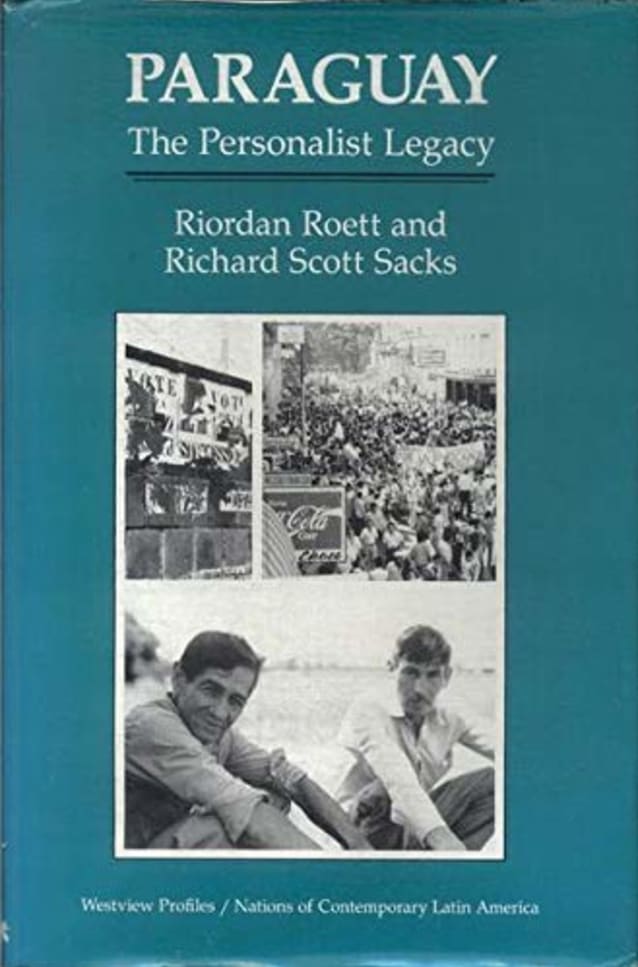PARAGUAY, THE PERSONALIST LEGACY
About
FOREWORD
Until almost the end of the 1980s, Paraguay and General Alfredo Stroessner were perceived as virtually synonymous in the minds of a whole generation. Indeed, this dictator often eclipsed the small, inland South American country over which he ruled for more than a third of a century. Yet, in the long run, the most important events in Paraguay occurred before Stroessner came to dominate the scene. Two of the hemisphere's most significant wars were fought chiefly in Paraguay- one in the 1860s and the other during the 1930s. The former, often called the War of the Triple Alliance, pitted Paraguay against Brazil, Argentina, and Uruguay in an epic struggle that could have had but one outcome-the eventual defeat and occupation of Paraguay. The more recent Chaco War (1932-1935) was fought against Bolivia, with Paraguay enjoying the home field advantage. Yet if the result could be termed a victory for Paraguay, it was a costly one that brought no advantages with it. Moreover, a good look at nineteenth-century Paraguay shows that the roots of the Stroessner phenomenon were planted deeply in Paraguay's national life from the time of independence.
Riordan Roett and Richard Sacks have joined efforts to do full justice to a country and a people who are seeking to build a better future on the very questionable foundation of the Stroessner legacy. They show that the long-lived Stroessner dictatorship was no aberration, but rather a logical link in Paraguay's almost unbroken tradition of essentially authoritarian to downright despotic rulers: Indeed, Jose Gaspar Rodriguez de Francia, Carlos Antonio Lopez, and Francisco Solano Lopez become highly understandable in the context of the nineteenth-century Paraguay effectively described by the authors. Solano's battlefield death in 1870 left a long-term vacuum, and instability ala Bolivia replaced strongman rule. In the aftermath of the Chaco War, the military's political role expanded, and the 1947 civil war set the stage for Stroessner's rise and subsequent 35-year hold on power.
Although Paraguay's economy is quite limited, it is far from simple subsistence. Economic growth was high during the 1974-1981 period, yet that growth was not sustainable once the great hydroelectric project at Itaipu-a Brazilian initiative-was completed. Roett and Sacks argue persuasively that the potential for renewed growth exists as Paraguay enters the 1990s. Even more important and original than their concise and competent treatment of the economy, however, is their elucidation of Paraguayan culture, centering upon the role of Guarani as the true national language in this most mestizo of all Latin American countries. Within their analysis of society, they give special and sensitive attention to the changing roles of women and Indians.
The ousting of Stroessner in February 1989 and the subsequent election of General Andres Rodriguez occurred too recently for their long-run effects to be clear. Roett and Sacks do, however, provide a systematic analysis of the structures and forces involved in the evolving political processes and clearly portray the environment in which these function. They help the reader understand Paraguay's very tentative and incomplete transition from authoritarian rule, a transition that is not yet, in important ways, one clearly headed toward real democracy. In this respect, their careful and insightful assessment of external factors and Paraguay's international position adds an important dimension.
The reader with a preexisting interest in Paraguay will find answers in this book to just what this country is, how it has reached its present state, and where it may be going. Individuals interested in broadening their comparative understanding of Latin America will be rewarded with a text that clears away persistent myths and misconceptions about this little-known country lying between Brazil, Argentina, and Bolivia. They will find that Paraguay is far from being simply the other side of the Uruguayan coin-a Southern Hemisphere Albania to that more advanced and fortunate little country's shining Switzerland. Beyond this, the Paraguayan case provides a link, via Bolivia, between the heavily European Southern Cone nations of South America and the highly Indian Andean countries.
Ronald M. Schneider
Praise for this book
5.0 out of 5 stars
Excellent Introduction to Paraguay up to 1991 (immediate post-1989 Coup)
Reviewed in the United States on April 17, 2023
Verified Purchase
Amazon Verified Purchase Reviews - Amazon Customer Service
Verified Purchase means the reviewer bought or used the item on Amazon, and paid a price available to most Amazo...REVIEW
------
I read this 1991 work from the 2019 Routledge hardcover reprint.
--------------------------
This work was written not long after the 1989 Coup that overthrew General/President Stroessner, who had ruled Paraguay since 1954. So, it is a time capsule to that date. They look at the history, economy, culture, politics & government, and international relations up to that date. And do project some thoughts into the future. They can only opine about a future constitution, writing before the 1992 Constitution is completed & implemented.This is a SHORT work (main text runs from just p. 1-167), more general survey of the history, with some good discussion of the economy and politics during the Stroessner Era.
It is fascinating how they do mention Mario Abdo Benitez (Stroessner's private secretary) on p. 130, part of the "militant" faction that wanted Stroessner's son, Gustavo, to succeed him. MAB's son will be elected president in 2018, running as a Colorado and winning in a close election.
The chapter "Notes" are outstanding. Read them carefully. As is the "Selected Bibliography". Sometimes an important work is cited in the Notes only (e.g., USA Ambassador to Paraguay during the Morinigo dictatorship of the 1940s William L. Beaulac's 1951 memoir, Career Ambassador, on p. 60, note 19).
There is a good map up front and some nice photographs throughout.
